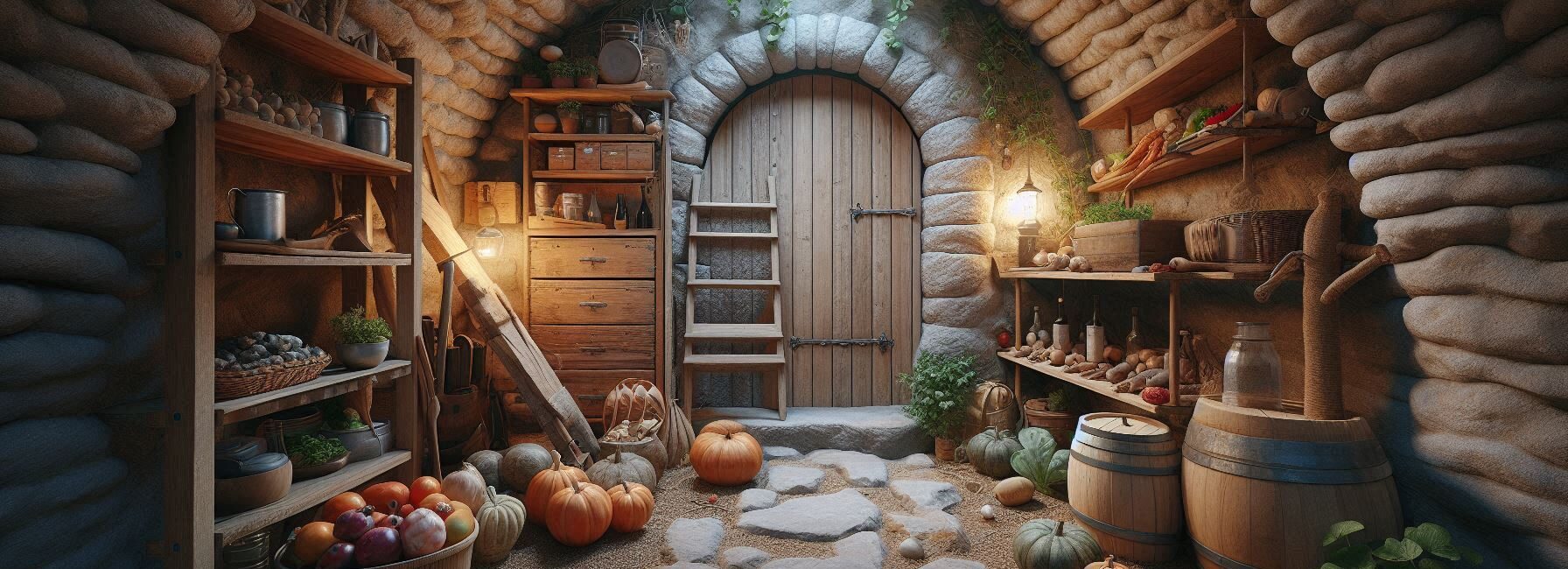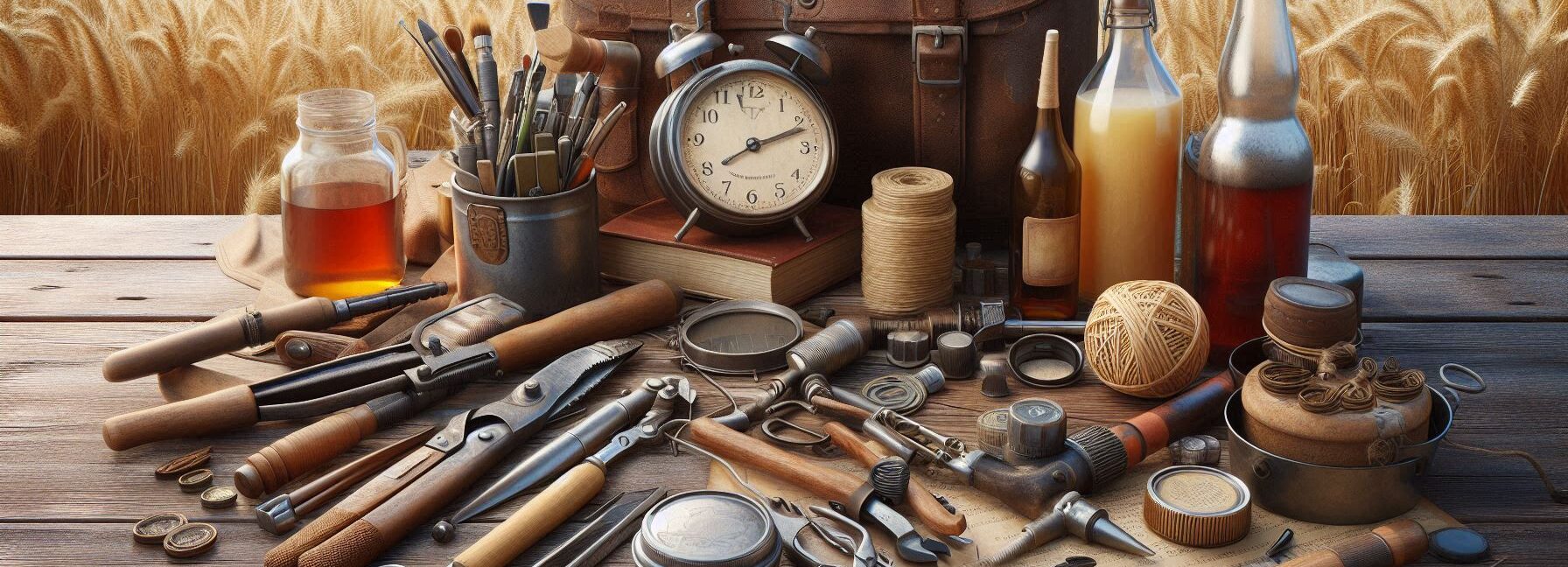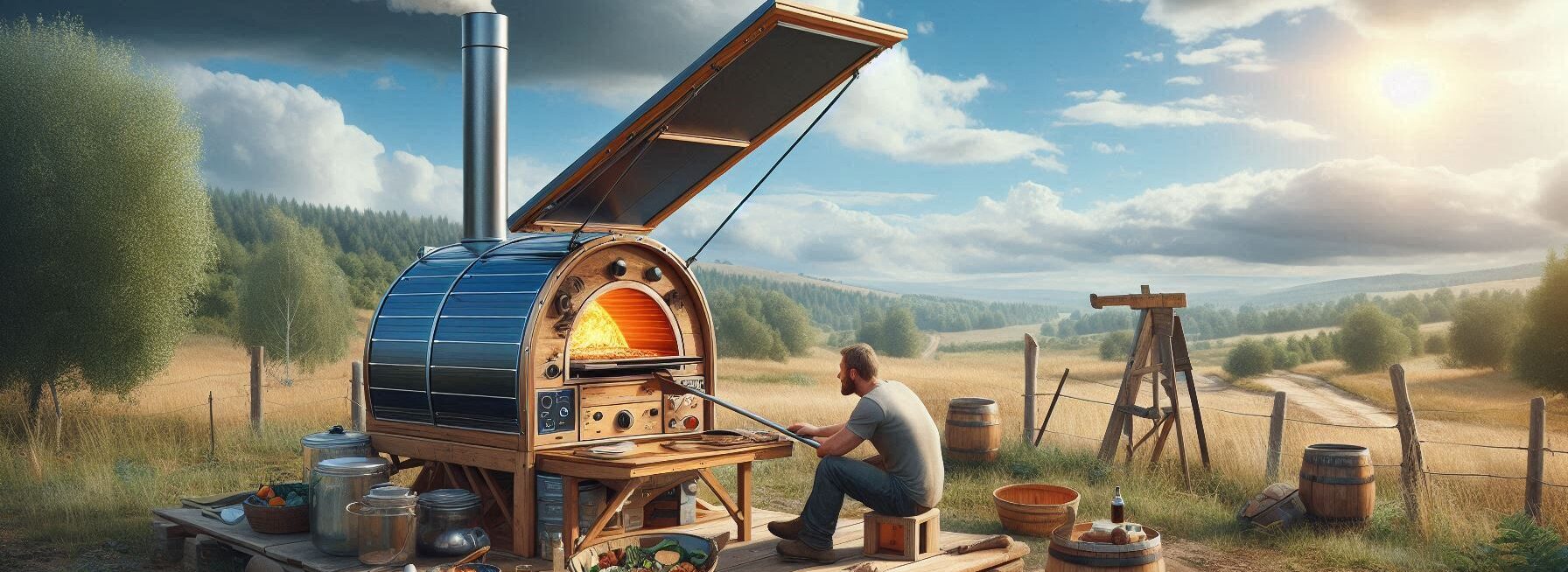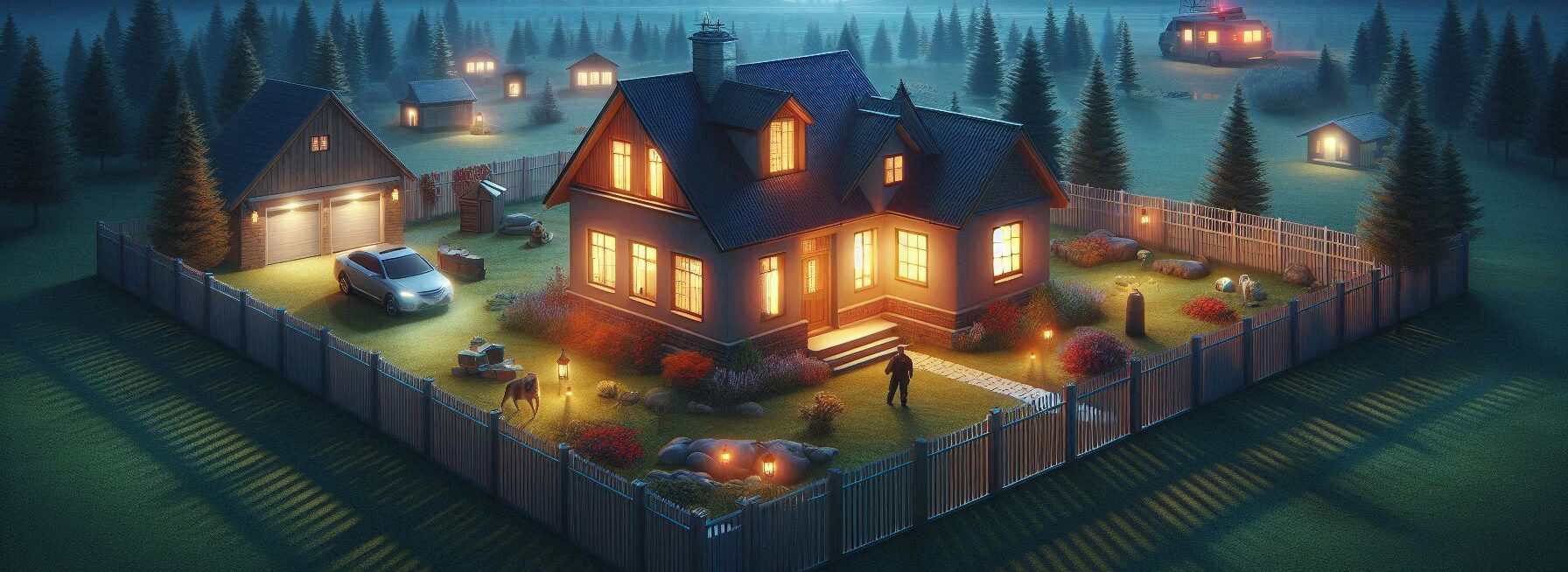Please Note: This post may contain affiliate links. If you click one of them, we may receive a commission at no extra cost to you. As an Amazon Associate, I earn from qualifying purchases.
Last Updated on November 2, 2025 by Kevin Collier
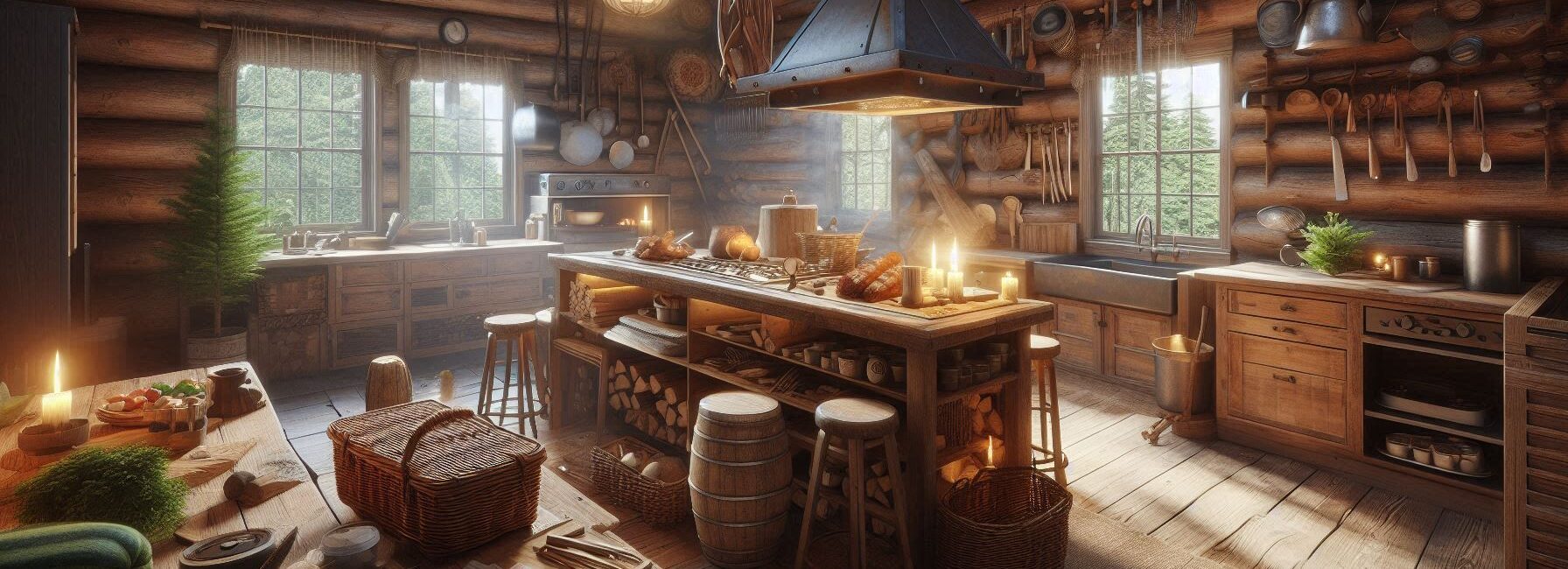
Top Takeaways and Key Concepts
- Plan your kitchen layout to keep counters, sink, and prep areas efficient.
- Use sturdy counters, tables, and storage jars for functional organization.
- Invest in high-quality knives, cutting boards, and versatile pots or pans.
- Ensure reliable water with pumps, rain collection, and proper drainage.
- Preserve food via canning, dehydrating, or freezing to last through winter.
So, you’re diving into the off-grid lifestyle? That’s awesome! You’re part of a special club now. Fresh air, homegrown veggies, and those chickens waking you up like it’s a daily concert. It’s wild, right?
Creating a kitchen that’s not just pretty but super useful is key. This space should feel cozy and work like a charm. Think about your layout. You want things close where you need them. No need to run around like a chicken with its head cut off, right?
Start with a good counter. It doesn’t have to be fancy, just enough space to chop veggies and maybe mix up some bread dough. A sturdy table can double as your prep area, too. It’s all about using your space smartly.
Storage is a game-changer. Jars and baskets can hold everything from rice to dried herbs. Label everything. Trust me, it saves so much time when you can just grab what you need without hunting through a mess.
Cooking tools are your friends. A solid knife, a big pot, and a skillet can do wonders. You don’t have to have a million gadgets. Just the basics can make cooking easy and fun. Maybe even a funky apron to make it feel extra special.
Oh, and don’t forget about a way to stay warm! Whether it’s a wood stove or a fire pit outside, cooking over an open flame adds this magical touch. Plus, it makes everything taste a bit better.
Enjoy the process! It’s about finding what works for you. You’ll make mistakes, and that’s okay. Each little error is a lesson, just like when the chicken decides to take a stroll through your tomatoes. Ah, nature!
Creating your dream kitchen in the middle of nowhere sounds tough, but it can be really rewarding. Embrace the adventure. You’ve got this!
Contents of This Page
*** Shop for Survival Gear - Tools - Kits ***
Survival Gear - Bags and Backpacks - Knives - Boots/Footwear - Communication
Outdoor Cooking - Gloves - Hydration - Dry Boxes - Water Filtration Systems
Tents - Sleeping Bags - First Aid Kits - Multi-Tools - Flashlights - Fire Starters
Navigation - Survival Food - Night Vision - Headlamps - Stun Guns - Binoculars
Planning Your Space: The Heart of Your Homestead
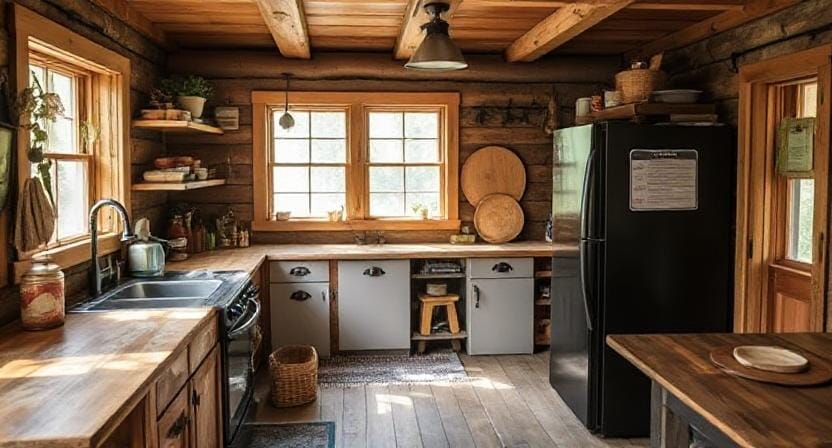
First things first, let's discuss how to plan your area. I know what you're thinking: “Do I really need a plan?” “Can't I just put some cabinets together and be done with it?”
Of course! But then your kitchen will look like a jigsaw puzzle with half of its components missing. Not great when you're attempting to make something tasty out of what you grew in your garden.
First, figure out where everything will go. Do you have place for counters? A sink? How about an indoor herb garden? Plants may be quite picky if they don't get enough sunshine, so keep that in mind if you're thinking about putting in an indoor herb garden. Believe me, basil has ignored me for weeks!
Think about the layout thoroughly. A U-shaped design is typically useful since it makes it easy to get to all regions while keeping everything within reach. This is important when you're elbow-deep in dough or dealing with vegetables that won't stay on your chopping board.
More Than Just Knives and Forks: Essential Tools
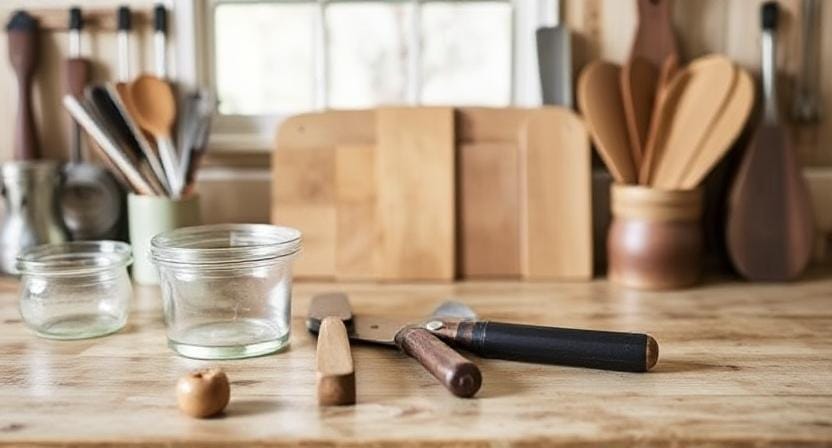
Next, we need to get the tools we need. If you live off the grid, you'll need equipment that can handle anything Mother Nature throws at it, including sudden rainstorms or raccoons hunting for goodies (and yes, they will come).
You should think about buying high-quality knives because nothing screams “I'm serious about cooking” like cutting tomatoes perfectly instead of wrestling them into surrender. It's also important to have a strong cutting board, preferably one made of wood or bamboo. Plastic boards, on the other hand, are just sad little islands of regret after a few usage.
You'll also need pots and pans that can take any heat source you could use, such propane, wood stoves, or campfires. This means you won't have to worry about burning water again! Cast iron skillets are great because they can be used as gym equipment when lifting them becomes too much of a burden!
And don't forget about ways to store things! You can use glass jars to store dried herbs or keep those delicious summer fruits so you can enjoy them later. Just don't consume all the jam before winter!
Water: The Most Important Thing for Cooking
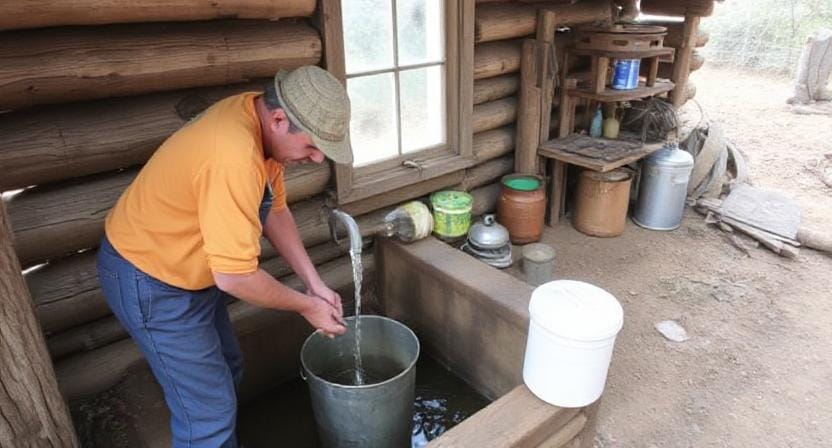
Now let's talk about one of the most vital parts of any kitchen: the water source! If you don't have water, you might as well be living in a desert (and trust me, sand isn't good for making soup).
If you have running water nearby, you might want to think about putting in a simple pump system. It doesn't have to be fancy; it just needs to work well enough so you don't feel like you're training for the Olympics every time you fill up your kettle.
Rainwater collecting systems are also great for people who want things that are more rustic. It doesn't get much better than drinking coffee produced with rainwater that you gathered right off your roof. Just be sure to filter it well unless you want extra protein from bugs that get stuck along the route.
Also, don't forget to have good drainage! Standing in two inches of dirty water and trying not to stumble on discarded carrot peels is the worst thing that can happen to dinner.
How to Cook: Be a Pioneer
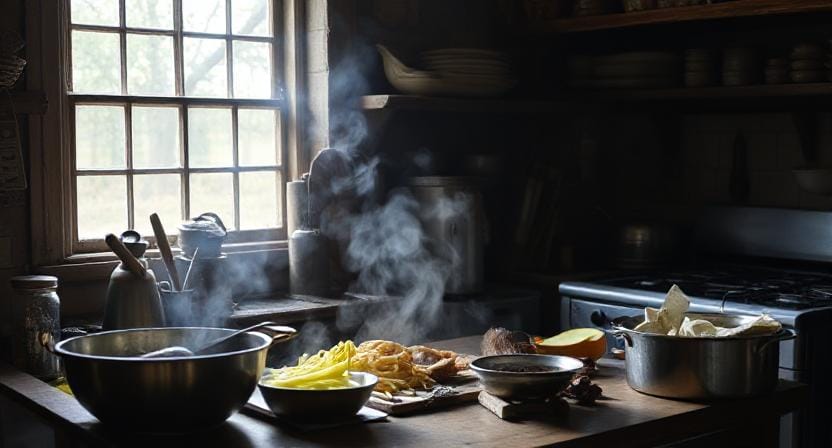
Let's see… now we can talk about how to cook! In a world full with microwaves and fast noodles, using old-fashioned methods might seem hard, but remember when pioneers cooked over open flames (and presumably burned their eyebrows off in the process).
If you have the room, wood-fired ovens are great investments. You'll be able to bake bread all day long as the warm smells fill your home.
On sunny days, you could also utilize solar cookers. They're good for the environment and provide you a great reason to relax outside while you wait for dinner!
For quick meals without too much trouble? Try making one-pot meals, where everything goes into one pot, and there you have it! Dinner served without having to clean up a lot of dishes later!
Keeping Food Fresh: How to Keep Summer Alive All Winter
Last but not least, how could we forget about keeping food fresh? After all those long hours spent producing veggies, the only thing we can do is preserve their goodness so we may enjoy them long after summer is over.
Homesteaders love to can things, such jams and pickled cucumbers. You name it! It's all worth it to see the jars pop open, even if my kids call me “the jar lady” afterward.
Dehydrating fruits and herbs is another great way to save space and have delightful snacks all winter long. And who wouldn't prefer apple chips instead of potato chips?
And finally, freezing leftovers makes sure that there's always something ready to eat when you are hungry late at night (you know those times!).
Frequently Asked Questions
How important is kitchen layout in an off-grid homestead?
A planned layout helps reduce wasted movement, improves workflow, and keeps prep, cooking, and washing areas efficient.
What tools are most essential in an off-grid kitchen?
High-quality knives, durable cutting boards, and versatile pans like cast iron are key for everyday cooking.
How do homesteaders store dry goods safely?
Glass jars, labeled containers, and baskets help keep foods organized, protected, and easier to locate when needed.
What are common water solutions for off-grid kitchen use?
Hand pumps, rainwater catch systems, and gravity-fed setups can provide reliable water if filtered and drained properly.
Are open-flame cooking options practical?
Yes, wood stoves, fire pits, and even solar cookers can provide heat for cooking without relying on electricity.
How should food be preserved through winter?
Canning, dehydrating, and freezing are common methods to store seasonal harvests for long-term use.
Do you need many gadgets in a homestead kitchen?
No, a few sturdy multipurpose tools are more reliable than many single-use gadgets when living off-grid.
Suggested Resources:
Homesteading Basics
https://www.homesteading.com/homesteading-basics/
The Ultimate Guide to Off-Grid Living
https://www.offgridworld.com/ultimate-guide-off-grid-living/
Preserving Food for Winter
https://www.foodpreservation.org/preserving-food-for-winter/

Kevin Collier is a seasoned survivalist and expert in prepping and homesteading, contributing to WiseSurvive.com. With a deep-rooted passion for self-sufficiency and outdoor survival skills, Kevin shares practical advice, strategies, and resources to help individuals prepare for any challenge. His informative articles cover a range of topics, from essential survival techniques to sustainable living practices, empowering readers to thrive in any situation. Whether you're a novice or a seasoned prepper, Kevin's insights will inspire you to take charge of your readiness and build resilience for the future.

